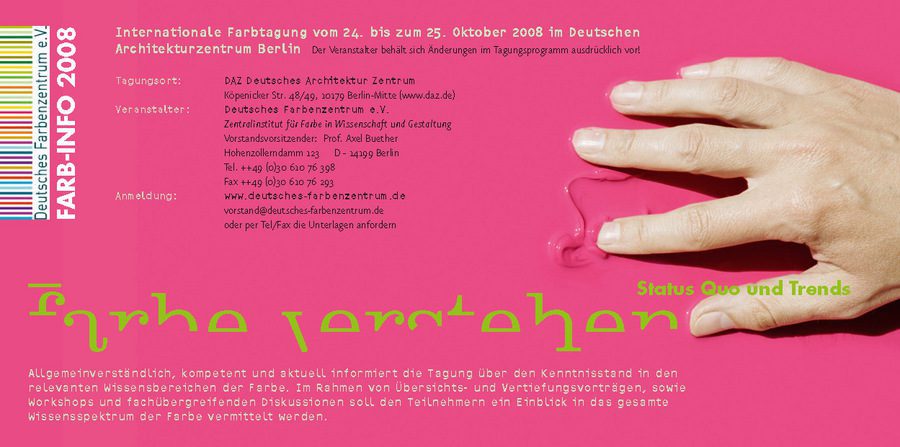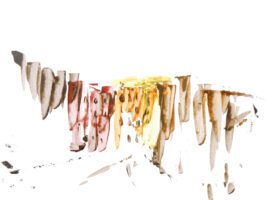Knowledge areas from the conference program
1 Color pigments and restoration
2 Color space design and architecture
3 Color marketing and trend research
4 Colorimetry and information technology
5 Lighting design and lighting technology
6 Color and biology
7 Color and psychology
8 Color education and mediation
9 Color and art
10 Color and health
11 Color systems and order
12 Color design and communication
13 Color technology and application
Download Color_Understanding_Conference_Reader2008
Download color_understanding_conference_flyer2008
From the opening speech of the conference
Prof. Dr. Axel Buether, Chairman of the Board of the Deutsches Farbenzentrum e.V.
Color as a tool of knowledge
What is the purpose of an interdisciplinary conference on “Understanding Color” when almost everyone experiences and intuitively understands color from the very beginning of their individual development, as soon as they enter into a relationship with their environment through their eyes?
We either accept our world as we experience it every day, or we question it and form ideas and explanatory models about it. Just by asking what something looks like, we confront a thing with its appearance, we separate the sign from the signified and thereby gain information. Depending on the nature of the question, color is a sensory sensation, a material property, a wavelength or a medium for visual communication.
In almost all areas of human interaction with our environment, we use color as a tool of knowledge, which is why the forum of an interdisciplinary conference is the best place to hear and discuss answers. Representatives from 13 areas of knowledge will provide conference participants with generally understandable, competent and up-to-date information on the current state of knowledge in many important areas of color.
The wealth of existing and new information in the field of color is immense, which is why only the intellectual penetration of the connections between the individual fields of knowledge in art, design, practice and science makes orientation and thus the appropriation of the state of research possible. The combined knowledge and experience of all participants will open up new horizons for each individual beyond their own field of work, making it possible to understand the phenomenon of color.
As part of overview and in-depth lectures, as well as workshops and interdisciplinary discussions, the participants of the conference will therefore also be given an insight into the entire spectrum of knowledge of color.
Understanding the explainable and the incomprehensible
Why does color recur in our imaginations and dreams, why do even people born blind write poems about the incomprehensible that fills the living space of their sighted fellow human beings? Without color, the environment changes and with it a person’s experience and behavior, as late blind people tell us, whose living space suddenly shrinks to the limits of their own body.
The color describes the way in which the environment appears to us and at the same time makes it clear to us how we face it. It refers to the contents about which we can acquire knowledge and those that defy explanation. In isolation, color describes the relationship between surface and form, whereas when viewed together it becomes a complexly structured fabric that organizes the landscapes of visual space down to the depth of the visible horizon. The color shows us the order of things and at the same time something incomprehensible that touches us, amazes us and leaves us silent.
Since each conference participant can only grasp a tiny fragment of what can be said and experienced about color in their own discipline, openness to other positions and a methodical approach to the subject of their own discussion are the prerequisites for the possibility of a deeper “understanding”.
The networking of the different thematic focuses creates an inexhaustible potential for expanding access to one’s own scientific and artistic research and promotes the culture of exchange and mutual understanding.



